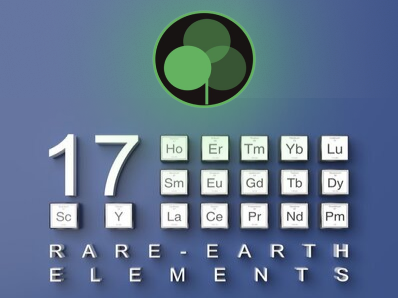Jonathan Daniel Chan
This is a recap of a workshop conducted on February 20th, 2022, hosted by Rebirth and Whiskira, a premium whisky accessories brand. Representatives from Ceilidhs (the Rebirth’s official whisky partner) and Whiskira were invited to candidly share their whisky knowledge and experience. The topics of the discussion were selected to give our workshop participants an introduction to the fundamentals of the whisky world. Moderated by from the Rebirth project team, the conversations during the workshop explored three general areas: whisky accessories, the various whisky types and where whisky gets its value from. Below are the transcribed questions and answers. To finish up the workshop, the Rebirth made a special announcement and revealed the winners of the premium experience giveaway campaign.
How Accessories Allow Us To Enjoy Whisky
Q. Today we have our two The Rebirth members from the Ceilidhs team, and our partners from Whiskira. Can you guys briefly introduce yourselves?
Terence (Ceilidhs): I’m Terence — a whisky lover myself. I work with Scottish distilleries and an exclusive whisky fund from which we source our premium whisky.
Jon (Ceilidhs): I’m Jon! I work closely with Terence, and we work together on managing the whisky investment fund.
Ian (Whiskira): Hi guys, We are Whiskira! I’m Ian, here with my colleague Josh. We are a whisky accessories brand — we supply glasses and decanters among other accessories like whisky stones. Our mission is to complete and enhance your all-around whisky drinking experience.
Q. How do you usually like to drink your whisky?
Jon (Ceilidhs): I like my whisky neat — on its own in a nosing glass — or in a white wine glass. Terence (Ceilidhs): It really depends on the mood and how I’m drinking it. If I’m at a party, I like to drink with ice or do some highballs. If I’m doing fine-dining, I like to drink it neat.
Ian (Whiskira): It depends on the occasion as well. When I’m at a party, I drink on the rocks to be able to consume more whisky, but when I’m alone, I prefer whisky neat (whisky on its own). Josh (Whiskira): I like whisky on the rocks — especially from our tumblers — because it really helps the aromas pop out.
Q. What are some factors that affect the whisky’s taste and flavour?
Jon (Ceilidhs): The volume and shape of the glass have an impact on how the whisky is delivered to your palette. A good way to try it yourself is to compare a whisky tasted from a nosing glass with the same whisky tasted from a white wine glass.
Ian (Whiskira): Contrary to what people may think, the glass actually influences the tasting experience. The rock glass (about 98% of whisky glasses in a bar) is characterized by straight sides, a wide opening, and a heavy and solid base. It isn’t ideal for nosing — but it doesn’t need to be — because it is designed for maximum versatility and drinkability. It’s ideal for you to add ice cubes. If you prefer drinking on the rocks, this glass is for you.
Josh (Whiskira): The highball glass is a taller version of rock glasses, designed for cocktails. The nosing glass (a.k.a the tasting glass) creates a more noticeable taste. Designed for the seasoned drinker, it contains the full aroma of the whisky. It is wide from the bottom and narrows on the top, focusing the aromas to the narrow opening and directing them to the drinker’s nose. The Glencairn glass (both brand and type of nosing class) is the gold standard for the nosing glass. If you prefer to drink whisky neat, this is one for you.
The final glass — the neat glass — is actually for beginners and the “new kid on the block” of the whisky glass world. NEAT stands for “naturally engineered aroma technology”, and has a wide opening and narrow waist. It eliminates nose burns and numbing, and directs the subtle aromas and harsh vapours away from the drinkers’ noses, making it the ideal glass for people who are new to spirits and aren’t used to the aromas. The smell, taste, and visual experience all affect each other.
Q. Is it easy to taste or smell the different whisky flavours?
Terence (Ceilidhs): Different glasses affect the drinking experiences — you won’t find much difference with blended whisky, but more so with single malt whisky.
Jon (Ceilidhs): Having a selection of different whisky simultaneously helps a lot in comparing the different aromas and qualities.
Q. Does whisky have to be decanted? What does that do to the whisky?
Josh (Whiskira): It’s a debated question — but yes — I think whisky has to be decanted. It depends a lot on the type of whisky, though.
Terence (Ceilidhs): We have to first understand how whisky behaves differently than wine. For red wine, the decanting period varies from half an hour to half a day. Premium (usually single cask) whisky, on the other hand, is usually matured in the cask for a long time, sometimes for more than 50 years. They are straight from the barrel (not blended from different casks or diluted with distilled water). When you first open up the bottle, the smell of the alcohol is overwhelming in the first sip. An hour later, when the part of the alcohol has evaporated, you will begin to notice the aromatic influences from the wood of the barrel. This will change the smell and taste of the whisky throughout time, so I like to have the same whisky periodically to experience that change. The smell and taste only stabilize after a month. The decanter is more useful for whisky than wine since the wine will go bad after a day or two, whisky can be in the decanter for more than 6 months and this way you can experience how the same bottle of whisky evolves with time.
Q. Is there “a best way” to enjoy premium whisky?
Terence (Ceilidhs): I would first start with smelling from a nosing glass, as it gives the most original taste. Then add a drop of water, which will open up the smell, take another sip. Then add a piece of ice, which changes the taste as it chills the whisky. The ice actually dilutes the whisky — so make sure to be cautious of that. That’s why some places use a big piece of ice which melts slower, to maintain the concentration of the whisky for longer.
Ian (Whiskira): We have whisky stones that chill the whisky and not dilute it at the same time. Some people prefer traditional ice — but make sure you make the ice into large cubes.
Q. Does food affect whisky tasting?
Terence (Ceilidhs): Yes! Different flavours of whisky work well with different types of food. For example, if you are having lighter food, try the floral whisky. If you are having heavier food, try spicy and rich-flavoured whisky. If you are going for dessert or a cigar, try peat and smoky whisky.
Differences Among Whiskies
Q. What are the basic types of whisky and how do you classify them?
Jon (Ceilidhs): There are 5 types of whisky: Single Malt (barley only) vs. Blended Malt (blend very different casks together), Single Grain (any grain other than malt — rye, corn, wheat) vs. Blended Grain (a combination), and Blended Whisky (just a general classification). Usually, collectors concern themselves with single or blended malt whiskies. The labelling is regulated by the country they are produced from — and the information is made very clear.
Q. How do casks play a role in the classification?
Jon (Ceilidhs): The single/blended malt refers to the distilling process. While the cask matters more in the maturation process (ex. With a single cask, the whisky matured only in a single barrel). While some distilleries have triple cask whisky, which means the same whisky would change casks three times through the maturation process, taking influence from the taste of three different sources. The material and location also have an effect on the whisky taste as well. For Bourbon, you have to use a specific type of wood. McCallan is very well-known for using Sherry (wine) casks. Bourbon oak casks are charred before being filled, giving the resulting product a rich brown colour.
Ceilidhs specifically deal with Scotch whisky. Campbeltown, Highland, Lowland, Islay, and Speyside are the five whisky-producing regions in Scotland. Each has different water sources that have an impact on the taste too. In some locations, peat is used to smoke the malt, which gives a unique flavour. Peat is a result of vegetation that has undergone a specific natural process. It’s more readily available in some regions over others.
Each distillery uses the geographical advantages in its region to produce a characteristic aroma or flavour. Peat is more readily available in Scotland, so it is a Scottish advantage over other distilleries of the world.
Whisky Value
Q. How do you differentiate a more valuable whisky from a less valuable whisky?
Terence (Ceilidhs): While whisky drinking is personal, whisky investment is more like a science. Of course, each distillery has different skills, qualities, and processes. Whisky — unlike wine — stays in the barrel all the way until they are bottled. A 50-year whisky means that it stayed in the barrel for a full 50 years. The maturing process is also dependent upon natural factors like temperature or humidity. Barrels from the same production batch could end up with very different quality whisky after 50 years of maturation. Hence whisky investors are mostly focusing on single malt, single cask, cask strength whisky. Blended whisky usually appreciates a lot slower than the single cask, cask strength whisky.
Q. How does whisky have to do with NFTs?
Jon (Ceilidhs): We wanted to set an expectation for the quality of the whisky. We only work with single cask cask[1]strength whiskies and have carefully selected the eight flavours of whisky — 500 bottles per flavour (cult) — to let people experience single cask whiskies according to their flavour. For every NFT you get, you can expect to get a whisky of premium quality.
Q. What is the spelling difference between ‘Whisky’ and ‘whiskey’?
Jon (Ceilidhs): ‘Whiskey’ in the US (and generally adopted) spelling, while ‘Whisky’ is the Scottish spelling.
Q. Which flavour do you guys prefer the most personally?
Terence (Ceilidhs): My favourite changes over time! Got sorted into Ignis, which is a spicy flavour. But right now Peaty flavour is my favourite, which is the cult Kaos’ flavour
Josh (Whiskira): Floral — because of the strong Japanese taste!
Ian (Whiskira): Floral, because they are both fans of Japanese Whisky, and most Japanese whisky are geared towards floral flavours.
Jon (Ceilidhs): Creamy, Rich & Full-Bodied Whiskies, which happens to be the flavour behind Stella, one of the 8 cults.






